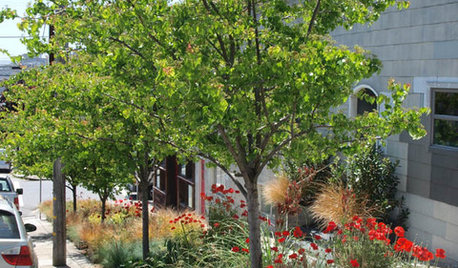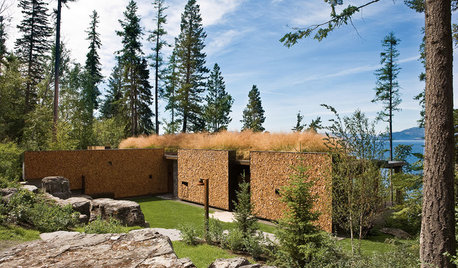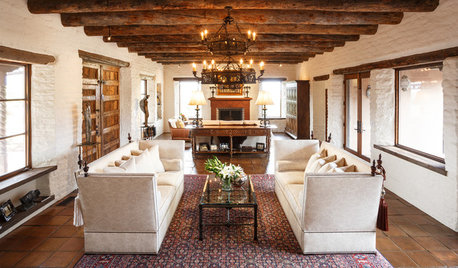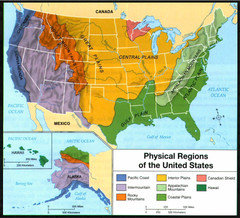Without large herbivores....grasses take over
wisconsitom
8 years ago
Featured Answer
Sort by:Oldest
Comments (38)
User
8 years agolast modified: 8 years agowisconsitom
8 years agoRelated Discussions
Having bees without taking the honey?
Comments (17)catherinet, I use a top bar hive, and do nothing at all to 'keep' them. I don't feed them, or fumigate for mites, or handle them at all. In the fall, we move the false back forward to give them a smaller area to heat, then we move the false back again in the spring to give them room to grow. That's all. Oh, we mow a path by the hive so I can walk down there and watch them. They're so interesting. I spent $100 ordering the hive off ebay, and haven't spent a dime since. Feral bees showed up on their own and 'adopted' me. If you want a hands off approach to get pollination and support local bees, set out a top bar hive and see what happens. It's working wonderfully for us, and its so easy and maintenance free. As far as an untended colony being a danger to commercial beekeepers, who are you gonna blame for the feral bees in the woods? Or do you think we should seek out and destroy all bees except the ones that serve man for profit? Bees aren't only for making money. They can exist for their own sake. Or just for enjoyment. My advice is to try it and enjoy. It works for us....See MoreWild Onions Taking Over Taking Over!!
Comments (20)William Carney, I would never buy from someone with unethical business practices like you are exhibiting. As the owner of your company, Globe Franchise dba ProPlugger, you signed up for Gardenweb just to post SPAM in our forums and knowing that you planned to disregard Gardenweb's TOS. You promised not to post SPAM when you signed up just yesterday, but then did it anyway. Hopefully, your unethical business practices will not lead to profit for you! I wouldn't use your product for this purpose anyway. Wild garlic/onions are often present in larger clumps than your fancy, overpriced bulb digger will handle. What do you think that monster is going to do to our daylily roots? Better to just wait until the soil is moist and pull the plants up, leaving the soil. Again, shame on you and your ripoff business for your disrespect of this website!...See MoreAnyone know how cold Mango blooms can take without being damaged?
Comments (19)Scifi, I am in Central Fl...two hours south of Orlando. Jsvand, No new growths yet on the lychee trees, but its only been almost a month... since the Jan.23 Freeze. That was the one that caused all the damages in my trees. I'm sure the Feb freeze didn't help it, but I didn't see anymore damage from it. I am sure that huge Lychee will survive, Most of the damage looks like the outer leaves. They can definitely take it colder than a Mango, and that Lychee seems like its pretty established...it was sad though, I saw that tree loaded with flowers, just a week or so before the freeze... I called Lychees on line, and was told that Lychees normally only bloom once a year...so chances are it won't rebloom? But you never know?...See MoreWeeds taking over
Comments (4)I believe a thick layer of newspaper would help. I have a horrendous weed problem in my veggie patch as well (as well as other beds), but this bed was the only one that I room to experiment. Between 4 tomato plants, I put down a layer of newspaper, about 5 sheets thick, and covered here & there with some leftover bagged manure. The weeds were minimal, as where I didn't cover, and after hand pulling the visible weeds, another jungle had sprouted. Once my tomatoes & peppers are done for the season, I'll be putting down a thicker layer of newspaper topped off with a nice layer of shredded leaves, to hold down the newspaper. I'll do the newspaper thing again in the spring, for good measure ;)...See MoreUser
8 years agolast modified: 8 years agowantonamara Z8 CenTex
8 years agowisconsitom
8 years agoUser
8 years agowisconsitom
8 years agoUser
8 years agowisconsitom
8 years agoUser
8 years agodbarron
8 years agoUser
8 years agodbarron
8 years agowisconsitom
8 years agoUser
8 years agoUser
8 years agowisconsitom
8 years agoUser
8 years agoUser
8 years agowisconsitom
8 years agodbarron
8 years agolast modified: 8 years agowisconsitom
8 years agoUser
8 years agowisconsitom
8 years agoUser
8 years agolast modified: 8 years agowisconsitom
8 years agowantonamara Z8 CenTex
8 years agolast modified: 8 years agoUser
8 years agolast modified: 8 years agowisconsitom
8 years agoUser
8 years agolast modified: 8 years agowisconsitom
8 years agoUser
8 years agolast modified: 8 years agoUser
8 years agolast modified: 8 years agowisconsitom
8 years agodbarron
8 years agolast modified: 8 years agoUser
8 years agolast modified: 8 years agowisconsitom
8 years ago
Related Stories

KITCHEN DESIGNKitchen of the Week: Taking Over a Hallway to Add Needed Space
A renovated kitchen’s functional new design is light, bright and full of industrial elements the homeowners love
Full Story
DECORATING GUIDESThe Faces Have It: Large Portraits Go Over Big
Oversize visages of celebrities and mere mortals make for double-take drama in interiors
Full Story
CURB APPEALTake Your Hell Strip to Heavenly Heights: 8 Design Ideas
Trade weedy dirt and trash for a parking strip filled with wispy grasses, low-growing flowers and textural trees
Full Story
GARDENING AND LANDSCAPINGHow to Make a Pond
You can make an outdoor fish paradise of your own, for less than you might think. But you'll need this expert design wisdom
Full Story
LIFEHow to Make Your House a Haven Without Changing a Thing
Hung up on 'perfect' aesthetics? You may be missing out on what gives a home real meaning
Full Story
CENTRAL PLAINS NATIVE PLANTS10 Top Grasses for the Central Plains
Low-maintenance grasses provide seasonal interest and wildlife habitat, and aid good design
Full Story
4 Easy Ways to Renew Your Bathroom Without Remodeling
Take your bathroom from drab to fab without getting out the sledgehammer or racking up lots of charges
Full Story
INSPIRING GARDENSInside Houzz: A Waterfront Property Ditches the Grass for a Garden
New drought-tolerant plantings and outdoor gathering spaces help this California backyard take in the view without wasting space or water
Full Story
MODERN HOMESHouzz Tour: A Modern Take on a Montana Log House
Multiple buildings form a vacation compound that's more like environmental art than architecture
Full Story
MEDITERRANEAN STYLEHouzz Tour: A Modern Take on Southwest Style
A designer updates a classic adobe home with lighter furnishings, fresh finishes and complementary ethnic motifs
Full Story




User